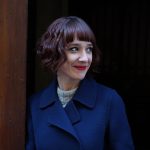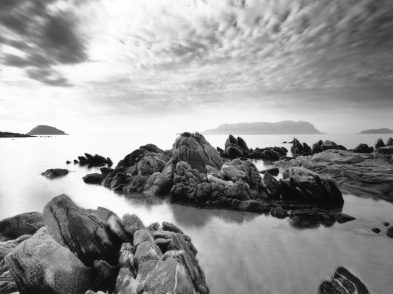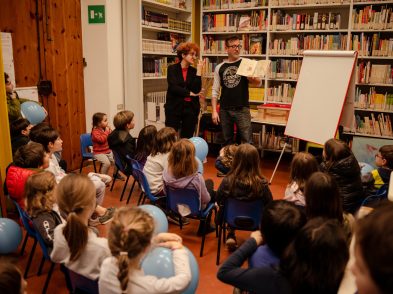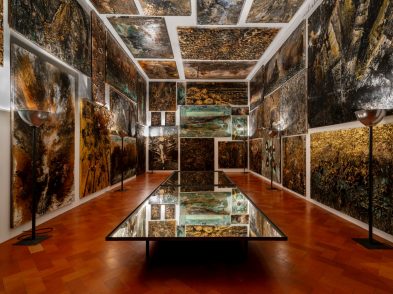Stepping down the cement stairs that lead to Cosimo De Vita’s studio, you leave behind the sun-filled, wisteria-draped street of via de’ Bardi and descend to a radically different space that hits like a blast of bohemia with frescoed skies and artworks covering the former wine cellar. Cosimo’s handcrafted chairs sit on the stage-like platform in the corner and the showroom proves an enthralling location in which exhibit the works by the artisan-designer or, as Cosimo coins it, artiginer. Perching on one of his creations (“Can we even sit on them?” “I get that question a lot!”), we discuss his designs and participation in fairs like Artigianato e Palazzo, Homo Faber and more.
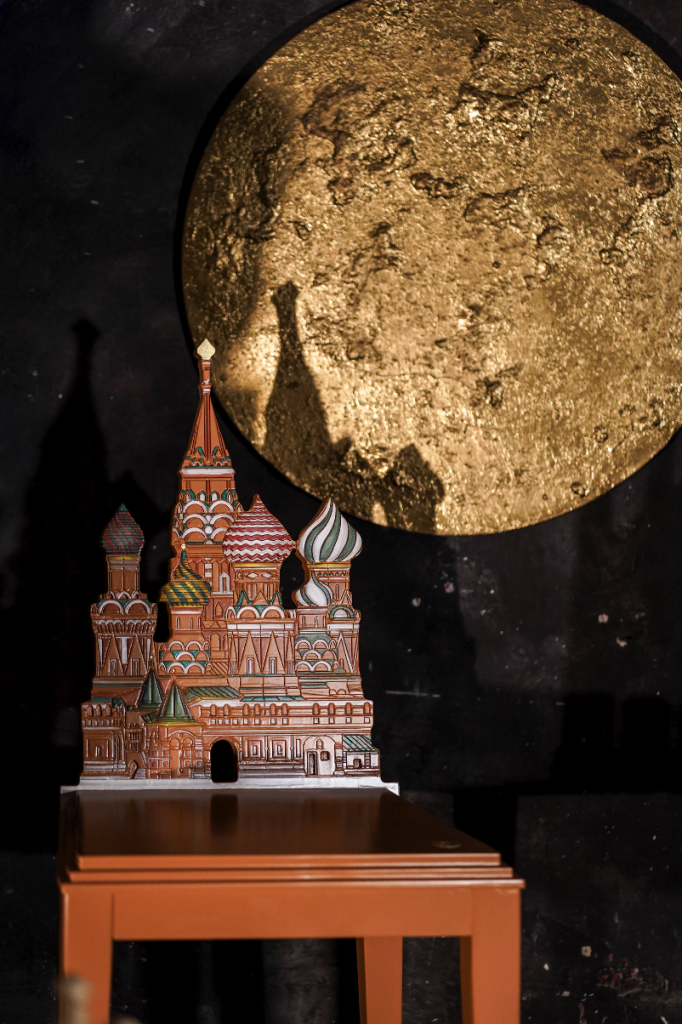
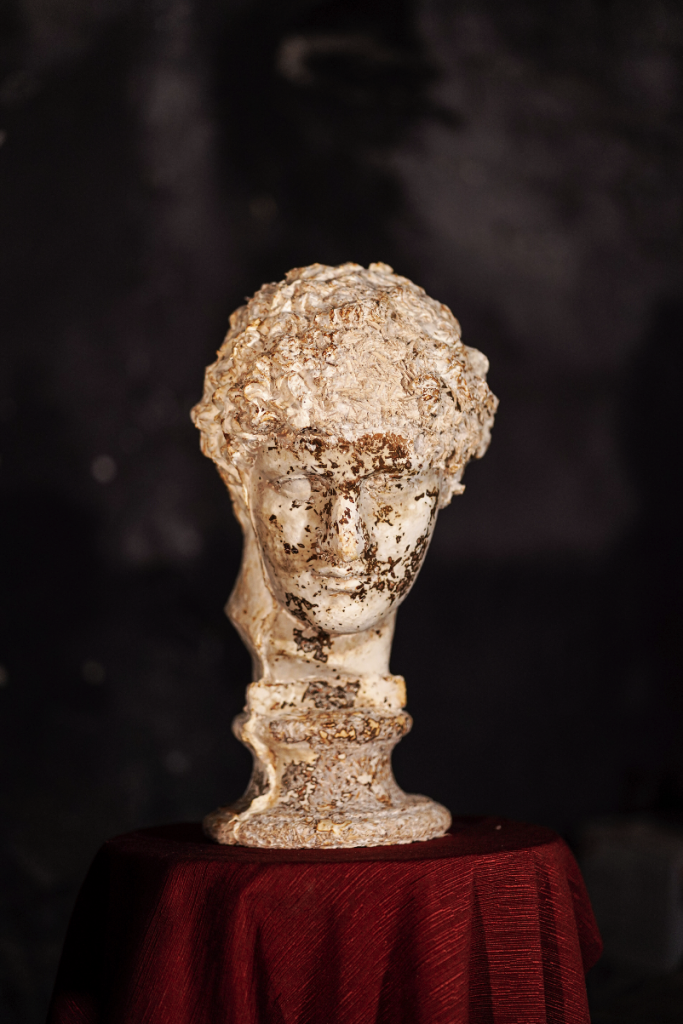
Let’s start by discussing this incredible space. How did you come to be here?
I came here almost eight years ago and I’ve been making chairs for a decade. I was in via Mazzetta in Santo Spirito before I found this building in via de’ Bardi. Working with varnish and wood at home wasn’t ideal, so my landlord very kindly suggested the ex-cantina. When I came down here, I immediately saw the potential and used this place as my workshop. As the years passed and my workload increased, I found another space a small distance from Florence in via delle Cinque Vie where I now carry out my work, but I decided to keep this because I’d become very attached. I like sharing it with other artists and I like that it’s a space for communicating and speaking freely about art and life. Even if it’s underground, you really feel a sense of freedom.
The arts clearly have a very important role in your life. Is part of that because your father and grandfather were both artisans?
Yes, that influenced me a lot, more than anything in the chairs that I make. When I worked in Santo Spirito, I saw the basilica every day and it always seemed like something familiar to me. In a moment of inspiration, which you often get living in this city amongst its beautiful monuments, I saw in the façade of Santo Spirito a familiar shape that almost seemed like a piece of furniture or a couch, and in fact my grandfather had a business in borgo della Stella, off piazza del Carmine, making seats for cinemas. One day, when I was sitting on the steps in the piazza, I turned around and saw this, and it connected me to my past and my grandfather. He was always an inspirational figure for me.
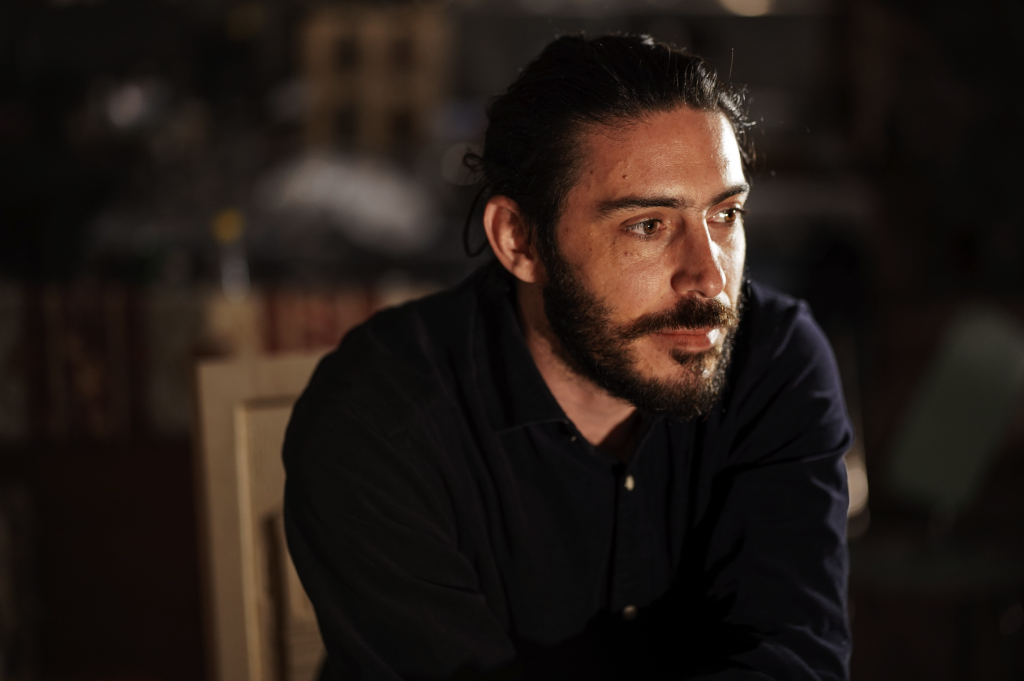
Tell us more about your works and career path.
Chairs are actually one of the most complex things to make because you have to consider many factors: beauty, comfort, practicality, resistance and easiness to clean. For example, you’re sitting there now, but you could fall or you could be uncomfortable. It’s a complicated process and the most interesting part, besides the development of the artistic process and concept that’s behind it, is the research in bettering my ability to realize an industrial object of design that is nevertheless artisanal. They are all handmade, but also with the use of a pantograph. I work with a business called Savio Firmino that’s been in the city for 50 years. Their experience has been a huge support. They give me the possibility to better the technical aspects related to the decoration and cut, while they look after the communications and sales.
Of course, because one aspect is the artistic creation and then there is the selling and the whole commercial side of things.
Yes, because I couldn’t do it all by myself. It’s a product that’s too connected to me and sometimes when someone was passionate about my works, I undersold them purely because I was pleased that people were interested, so I wasn’t able to give the right price to the works that I created. Having a business that looks after the selling and communications allows me more freedom to create new projects, and I have many ideas! I’ve also been very fortunate to find support from generous sponsors, which has made a big difference.
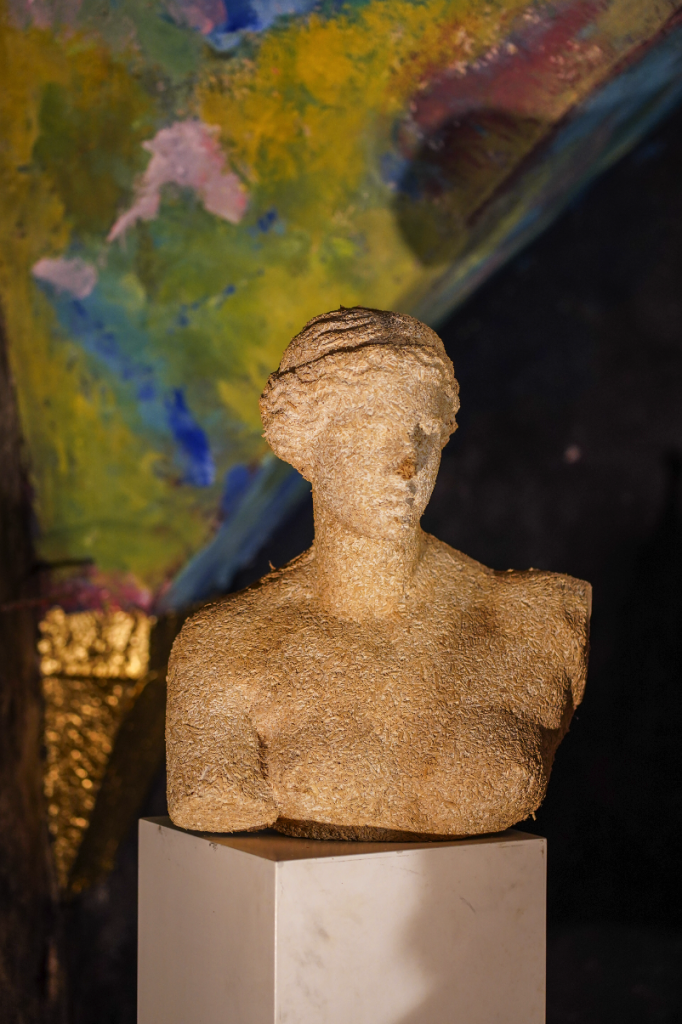
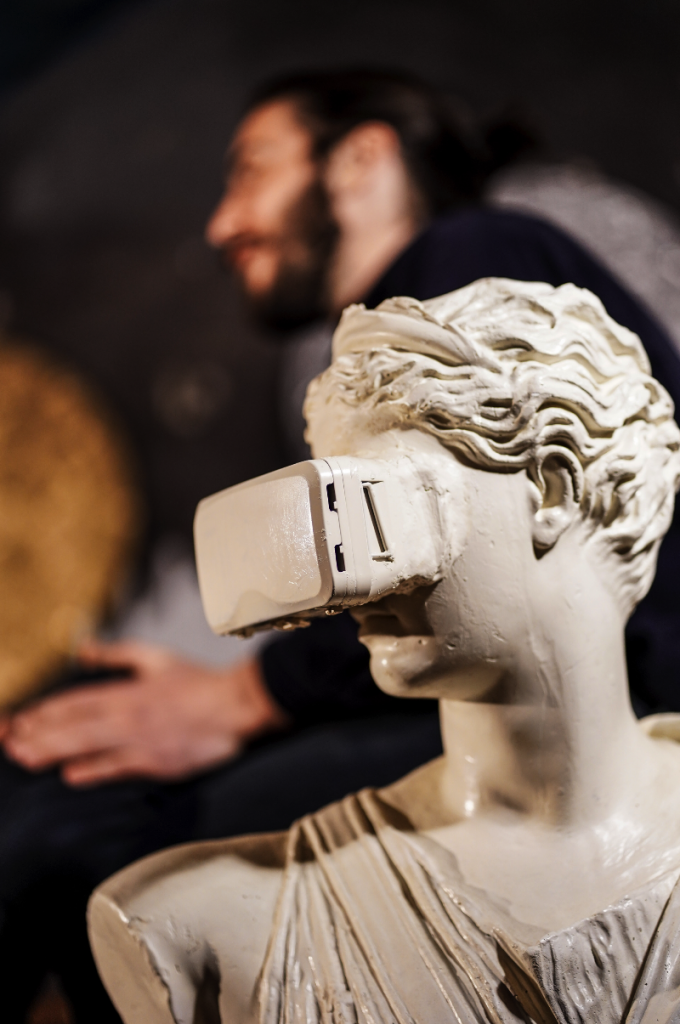
What does participation in fairs like Artigianato e Palazzo and Homo Faber mean for your career?
The work Artigianato e Palazzo is doing is hugely important. They really curate their selection of artisans and give a lot of value to Florence. I had the good fortune of participating two editions ago, where I brought this Citying collection and it was incredibly successful. It’s made up of 16 chairs that represent the symbolic monuments of the world. I won the Perseo Prize selected by the public and that was a very important moment for me. Thanks to Artigianato e Palazzo, I was chosen for Homo Faber in Venice this month, where I’ll be presenting a bench with the image of San Marco. Another event that really launched me was MIDA (International Handicraft Exhibition in Florence). At Salone dei Mobile in Milan, I will present a whole series that’s actually made from mushrooms! It’s a line called Metapuntoverso, inspired by the paintings of Giorgio de Chirico. The theme of the fair is eco-sustainability with a shortlist of under 35-year-old designers participating. I found this material that’s used in both packaging and reuse, and I thought, Why not move it to the world of art and design. I created the shape of an antique bust from this amazing material: its interior is a cultivated mushroom that I had to grow between 20 and 25 degrees in a sterile environment, paying great attention. Then I had to bake it, like a cake! The product has an expiration date. I wanted to send a message of Why do things always have to last forever. This will regenerate and fertilize the earth. We are so used to buying and accumulating things. It’s nice that it incorporates stages of life and will have a start and finish.
You also spent some time in New York.
When I was there, I discovered something very important: what it was that I wanted to do with my life. I came back and decided that I didn’t want to be a bartender anymore. I had opened Volume in 2010 and I was there for two to three years. I learned so much, especially about how to relate to people and I met some very interesting individuals, which is what took me to New York. The city gave me a bolt of energy and adrenaline, even though I know some people have the opposite experience. While there, the realization dawned that I am an artisan, I want to concentrate on things done well and to learn from the masters, so where should I go? Florence. But I wanted to bring back something from an international city like New York. I returned to the city that could teach me on an artisanal level and that could also give me the calm I needed to create, but I also brought back the drive that New York gave me to make this my life’s work. Now, this year, I celebrate 10 years doing what I do and I’d love to celebrate it by gifting a chaise longue inspired by Santo Spirito to the piazza as a temporary installation. It will be a functional seat because, as we know, in Florence there are never enough!
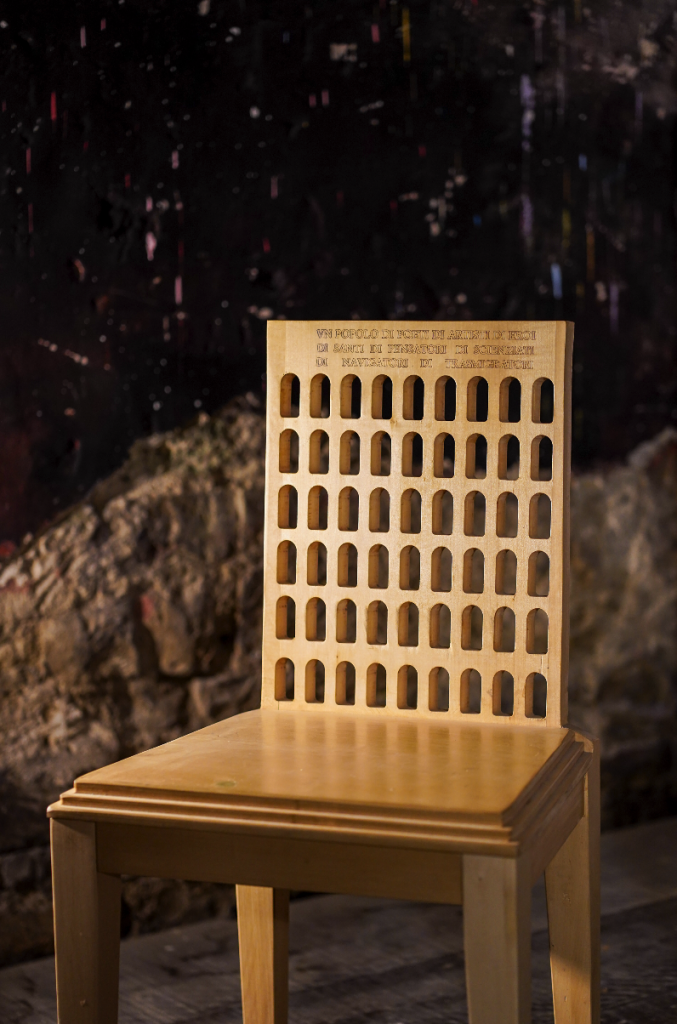
Chairs are actually one of the most complex things to make because you have to consider many factors: beauty, comfort, practicality, resistance and easiness to clean. For example, you’re sitting there now, but you could fall or you could be uncomfortable. It’s a complicated process and the most interesting part, besides the development of the artistic process and concept that’s behind it, is the research in bettering my ability to realize an industrial object of design that is nevertheless artisanal.
There was also an NBC documentary about you.
Yes, that was thanks to Elettra Fiumi. There’s actually a beautiful story because it goes back to when we were really young. Our families were friends and she and her family went to America when I was around three and she was six, but I didn’t have a very clear memory of us being friends. Then it happened that I was looking for accommodation in New York and I was put in contact with this Florentine who lived there. I told my mother that maybe I’d found a house and that this person was called Elettra Fiumi. She told me aspetta (wait), and she went into her room and took out a photograph of the two of us playing in Boboli Gardens! We became friends again. She made a documentary titled Radical Landscapes about the 9999 artistic movement and the dialogue between nature, humans and technology. As part of this, I presented a series of objects called Even Less, one of which is a sculpture with 3D vision goggles. Another was a chair with a computer screen in place of the back of the chair, and then there were headphones that had shells instead of earpieces, so that you could hear nature instead of technology. She later made an NBC documentary about me at the time when I’d created a large-scale installation for piazza del Carmine. That was another incredible thing for me because piazza del Carmine is where I was born and borgo della Stella is a place that is a symbol of my life. It was an honour for me.
This article was generously sponsored by David and Alatia Bach.
Visit Cosimo De Vita’s showroom at via de’ Bardi 28R (appointments preferred) and see his Instagram and website. His chairs can be purchased at www.saviofirmino.com and www.artemest.com.

